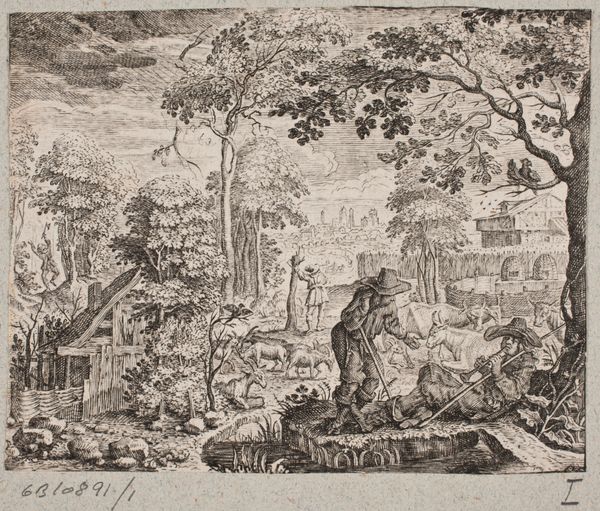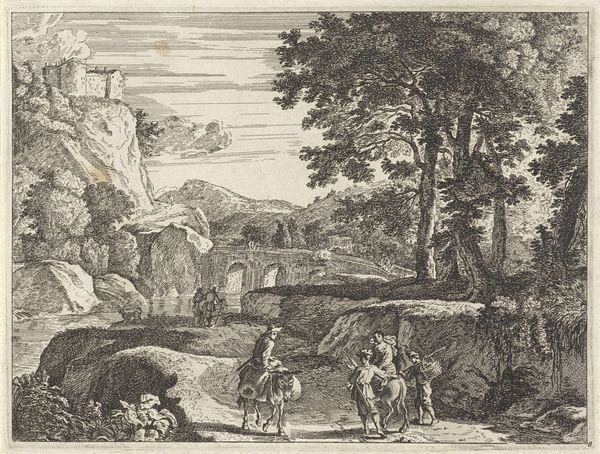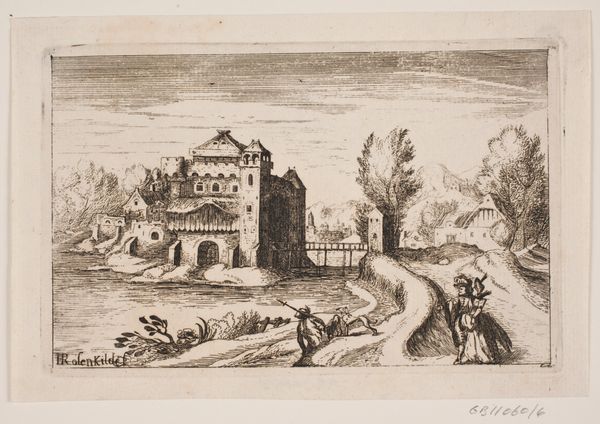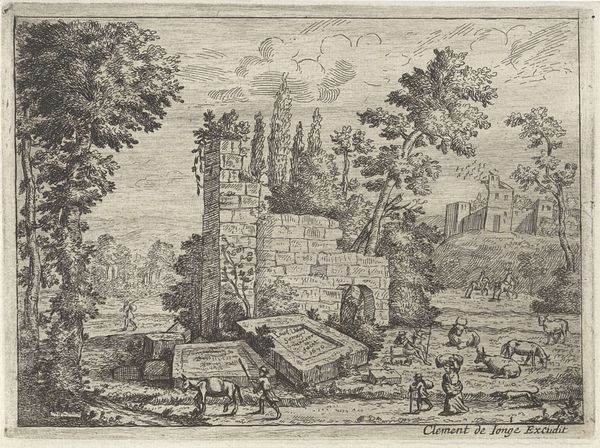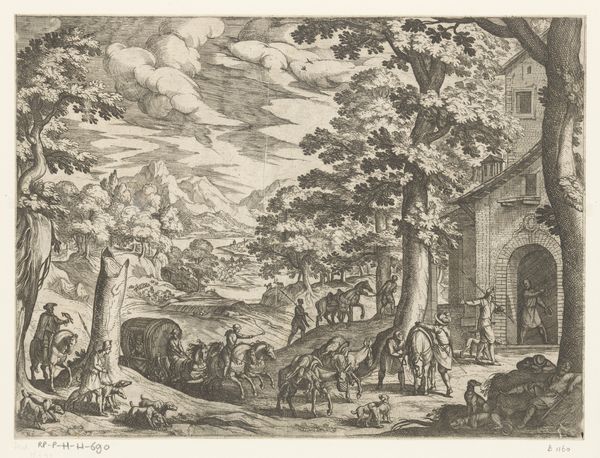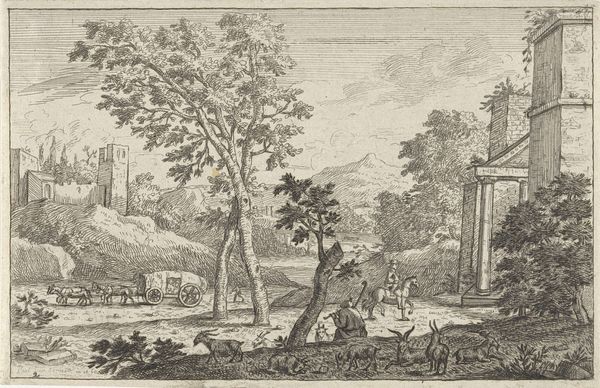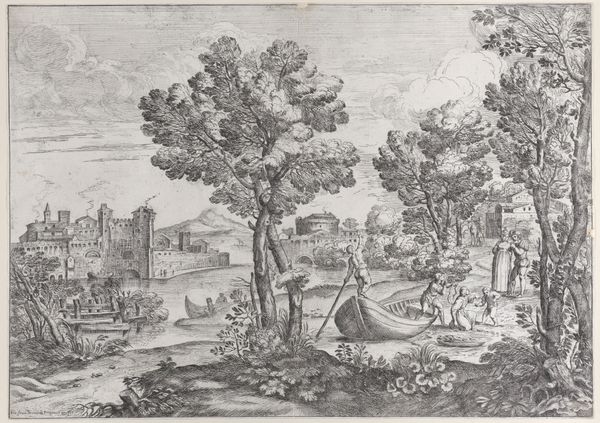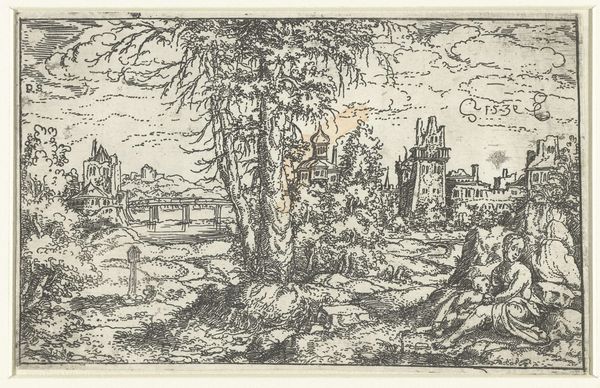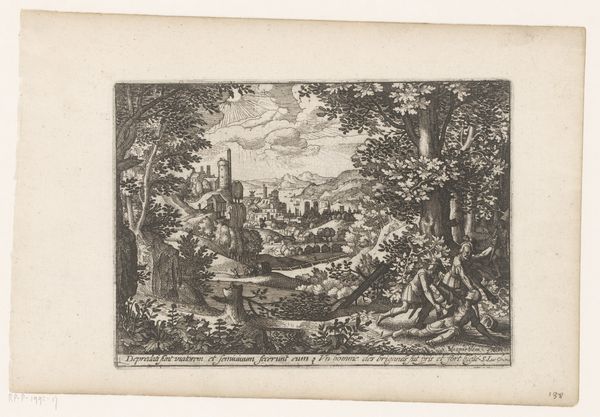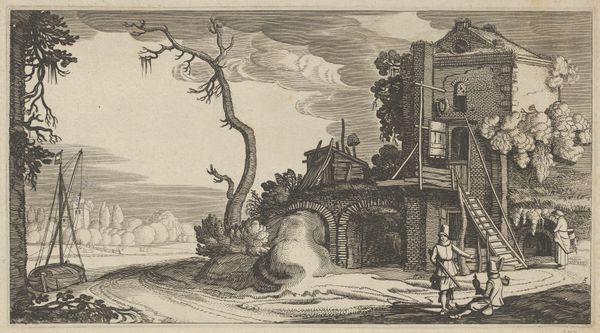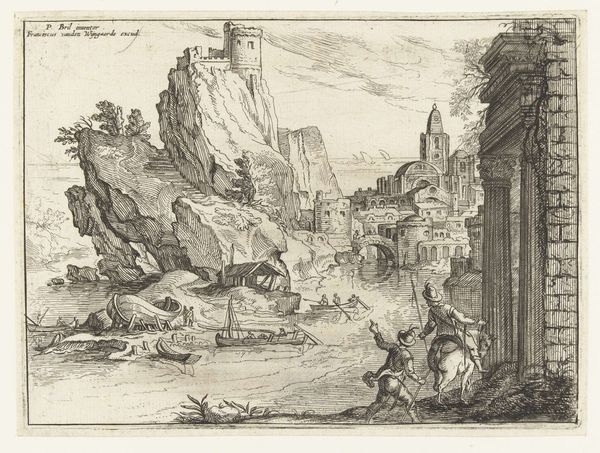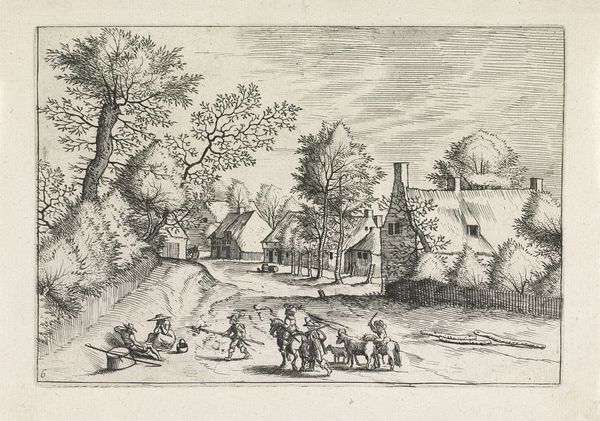![Illustration til Adam Olearius, “Persianischer Rosenthal von einem Sinnreichen Poeten Schich Saadi […]”, Schleswig 1660 by Christian Rothgiesser](/_next/image?url=https%3A%2F%2Fd2w8kbdekdi1gv.cloudfront.net%2FeyJidWNrZXQiOiAiYXJ0ZXJhLWltYWdlcy1idWNrZXQiLCAia2V5IjogImFydHdvcmtzLzNmYzYyOGI4LTVhOWQtNDE1OS1hNWEzLTE0ZTYxYTI1Y2EwYi8zZmM2MjhiOC01YTlkLTQxNTktYTVhMy0xNGU2MWEyNWNhMGJfZnVsbC5qcGciLCAiZWRpdHMiOiB7InJlc2l6ZSI6IHsid2lkdGgiOiAxOTIwLCAiaGVpZ2h0IjogMTkyMCwgImZpdCI6ICJpbnNpZGUifX19&w=3840&q=75)
Illustration til Adam Olearius, “Persianischer Rosenthal von einem Sinnreichen Poeten Schich Saadi […]”, Schleswig 1660 1660
0:00
0:00
print, engraving
#
narrative-art
#
baroque
# print
#
landscape
#
cityscape
#
engraving
Dimensions: 103 mm (height) x 129 mm (width) (bladmaal)
Editor: This is a 1660 engraving by Christian Rothgiesser, titled "Illustration til Adam Olearius, 'Persianischer Rosenthal von einem Sinnreichen Poeten Schich Saadi…', Schleswig 1660". The chaotic composition makes it feel very busy; people are gathered near a tree in the foreground and crowds mill through the city gate beyond. What do you see when you look at it? Curator: I see a fascinating collision of cultures and a visual record embedded in a very specific moment in history. This image isn't just a landscape or a cityscape; it's a document reflecting Europe's burgeoning engagement with the Middle East and Persia. Consider how Rothgiesser, a European artist, interprets Persian life and literature for a European audience. What does it mean for an outsider to illustrate an insider’s story? Editor: I guess it's easy to overlook the perspective that comes into play. It makes me wonder if the way the people are drawn and the architecture rendered tells us more about European perceptions of Persia than about Persia itself? Curator: Precisely. The image becomes a site of negotiation, where power dynamics and Orientalist fantasies are visualized. Think about the figures, their clothing, their activities. Are they exoticized or romanticized? And how does this imagery contribute to a larger discourse about the East? Does the 'chaos' you observed reflect a Western sense of order imposed on a culture perceived as 'other'? Editor: I hadn’t considered it that way at first. Now it seems less like just an illustration and more like a complex statement about cultural exchange, filtered through a particular European lens. I can see how studying the historical context changes my understanding so profoundly. Curator: Absolutely, and by interrogating the power structures inherent in this artistic representation, we can uncover its layers of meaning and understand the societal implications embedded within. This process encourages a broader critical dialogue, spanning issues of identity, representation, and historical narrative. Editor: Thanks for opening my eyes to those nuances. I will certainly keep this in mind.
Comments
No comments
Be the first to comment and join the conversation on the ultimate creative platform.
